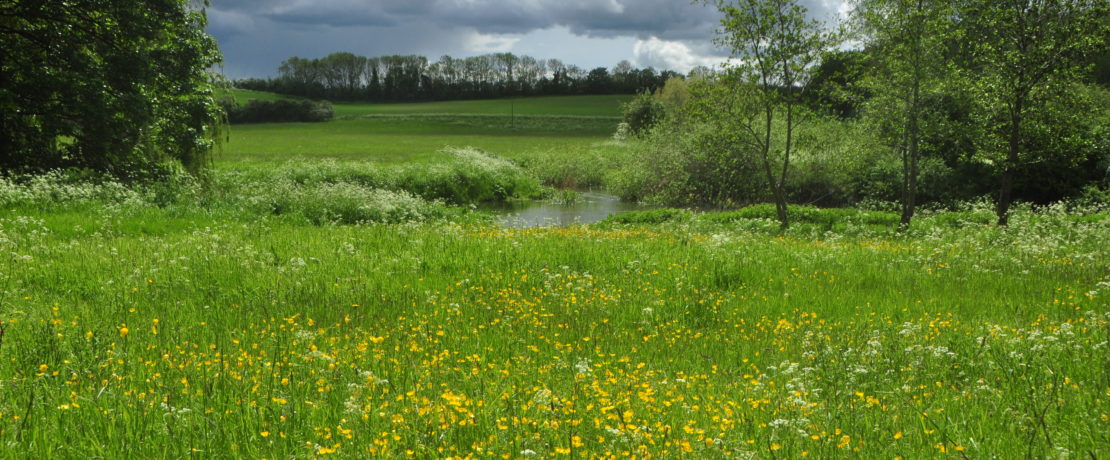Bedfordshire’s earliest botanist
Charles Abbot (1761-1817) was a botanist, entomologist and clergyman.
He wrote Flora Bedfordiensis (or to give it its full title, Flora Bedfordiensis: comprehending such plants as grow wild in the county of Bedford, arranged according to the system of Linnaeus, with occasional remarks) and recorded the first sighting of the Chequered Skipper butterfly in Britain.
Parson-naturalist
Gilbert White (July 1720 – 1793) is perhaps the best-known example of a clergyman who was also a naturalist, his Natural History and Antiquities of Selborne is still in print and admired for its close attention to the wildlife on White’s doorstep. In the eighteenth and nineteenth centuries, the habit of combining religious duties with scientific enquiry grew rapidly and Charles Abbot is an excellent example. He was vicar of both Oakley Reynes (the manor of which could trace its history back to the Domesday Book) and Goldington.
The Linnean Society
The Linnean Society was founded in 1788 and takes its name from the Swedish naturalist Carl Linnaeus (1707–1778) whose botanical, zoological and library collections have been held by the Society since 1829. Linnaeus is known as the ‘father of taxonomy’, and formalised the modern system of biological classification. Abbot was elected a Fellow of the Society in 1793. Charles Darwin was among later members of the Society.

Flora Bedfordiensis
In 1795 Abbot sent a paper called Planta Bedfordiensis to the Linnean Society. It was never published but contained a list of 200 plants which Abbot felt to be the rarer species in the county and believed should be regarded as Bedfordshire’s most important flora. Three years later he published Flora Bedfordiensis, only the third county flora to be published behind Oxfordshire and Cambridgeshire. The work included 748 flowering plants and ferns as well as mosses, fungi and other flora. The Heritage Library at Bedford Central Library holds a copy of the published book. Flora Bedfordiensis contains the first botanical records for many sites across Bedfordshire such as Putnoe Wood, which was at that time part of the parish of Goldington where Abbot would later serve as vicar.

Sarah Abbot
Abbot’s wife, Sarah, assisted him in his work. She was responsible for the five large volumes of his herbarium. The herbarium was a collection of preserved plant specimens which Abbot could use to assist him in identification of plants. Today herbariums usually also provide evidence for the locations of different species.
Butterflies
Abbot was also interested in butterflies and insects. In November 1798 he presented a long paper to the Linnean Society describing the Chequered Skipper butterfly and its habits. He was the first to record the species in Britain, discovering it in Clapham Park Wood. This part of his paper was published in the Transactions of the Society. His papers and letters contain many references to caterpillars, their food plants and life histories.

Charles Abbot – a timeline
1761 Born in Blandford
1772 Enters Winchester School
1779 Joins New College, Oxford
1787 Marries Sarah Harris near Malvern in Worcestershire
1788 M.A. degree awarded, arrives in Bedford to be usher or under-master at Bedford School, a post usually reserved for New College graduates, elected a Fellow of New College
1793 Elected a Fellow of the Linnean Society
1795 Unpublished paper Planta Bedfordiensis sent to the Linnean Society
1798 Becomes vicar of Oakley Reynes (the last before the livings of Oakley and Bromham were joined), Flora Bedfordiensis published, presents a paper to the Linnean Society describing how he found the Chequered Skipper butterfly in Clapham Park Wood (the first recorded sighting in Britain)
1802 Awarded a Doctor of Divinity degree
1803 Becomes vicar of Goldington, Bedford
1808 Writes about useful and harmful plants of agricultural land for Thomas Batchelor who was writing his General View of Agriculture in Bedfordshire
1813 Elected Fellow of the Society of Antiquities
1817 Dies at Bedford, buried at Great Malvern with his wife who died before him








